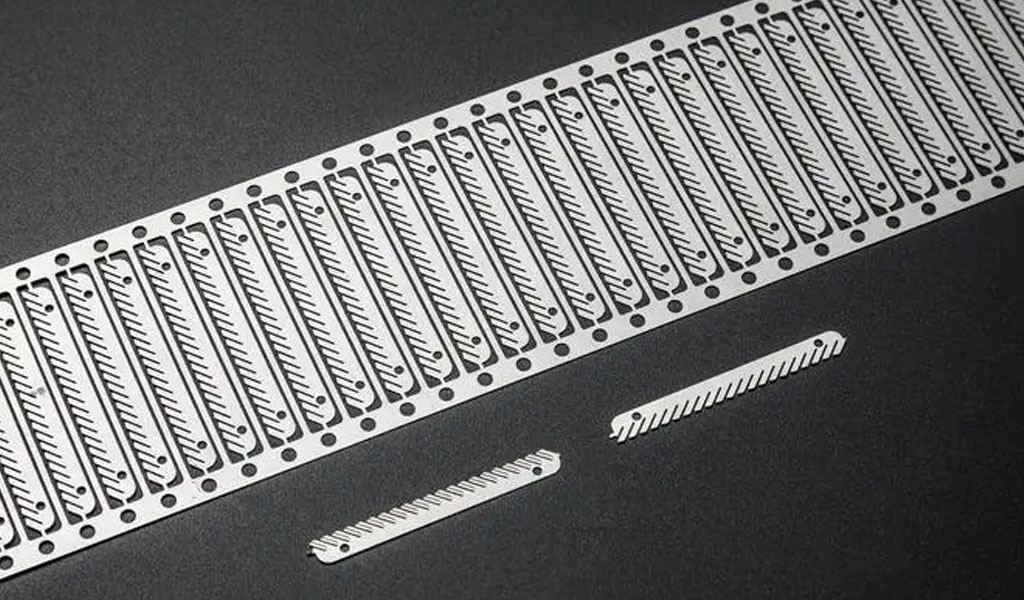Bipolar plates serve as fundamental components in both PEM and SOEC electrolysers, playing a pivotal role in the efficiency and cost-effectiveness of these systems. This article delves into the manufacturing processes, material considerations, and innovations driving cost-effective production of bipolar plates for these advanced electrolysis technologies.

Understanding PEM and SOEC Electrolysers
Proton Exchange Membrane (PEM) Electrolysers and Solid Oxide Electrolysis Cells (SOECs) are two distinct technologies used for the electrolysis of water to produce hydrogen and oxygen.
Both play a significant role in the advancement of sustainable energy solutions, yet they differ in their operational principles, materials, and applications.
Proton Exchange Membrane Electrolysers (PEM)
PEM electrolysers are renowned for their ability to efficiently produce hydrogen through the electrolysis of water. The bipolar plates within PEM cells facilitate the passage of current between individual cells while also ensuring the separation of hydrogen and oxygen gases.
Solid Oxide Electrolysis Cells (SOEC)
In contrast, SOEC electrolysers operate at higher temperatures and are primarily utilized in industrial-scale applications. Bipolar plates in SOEC systems aid in conducting electrical current between the electrolyte and electrodes while withstanding elevated temperatures.
Importance of Bipolar Plates in Electrolysers
Bipolar plates are crucial for optimizing the performance of electrolysers. They assist in:
- Efficient Current Conduction: Facilitating the flow of electrons through the electrolysis process.
- Gas Separation: Enabling the segregation of hydrogen and oxygen gases.
- Corrosion Resistance: Maintaining structural integrity despite the harsh operating conditions.
Key Challenges in Bipolar Plate Manufacturing
Manufacturing bipolar plates for Proton Exchange Membrane (PEM) and Solid Oxide Electrolysis Cells (SOECs) involves overcoming several challenges related to materials, production techniques, and cost-effectiveness. These challenges significantly impact the performance, efficiency, and overall feasibility of electrolysers. Here are the key challenges in bipolar plate manufacturing:
Material Selection
Selecting the right materials for bipolar plates is critical. Commonly used materials include graphite, stainless steel, and composites. However, finding materials that balance cost-effectiveness, conductivity, durability, and corrosion resistance remains a challenge.
Manufacturing Techniques
Traditional manufacturing methods such as stamping or machining have limitations in terms of precision, cost, and scalability. Optimizing manufacturing techniques to meet the specific requirements of PEM and SOEC systems is essential.
Cost Efficiency
Reducing manufacturing costs without compromising quality or performance is a significant challenge faced by industries adopting electrolysis technologies. Finding innovative methods to produce bipolar plates at scale while maintaining cost-effectiveness is imperative.
Innovations in Cost-Effective Bipolar Plate Manufacture
In recent years, advancements in materials science, manufacturing techniques, and surface treatments have spurred innovations in cost-effective bipolar plate manufacture for Proton Exchange Membrane (PEM) and Solid Oxide Electrolysis Cells (SOECs). These innovations aim to enhance performance, reduce production costs, and improve the scalability of electrolysers. Here are some notable innovations in this field:
Advanced Materials Development
Research focuses on developing cost-effective yet high-performance materials for bipolar plates. This includes exploring graphene-based composites, coated stainless steel, and other novel materials that offer improved conductivity and durability at reduced costs.
Additive Manufacturing (AM) and 3D Printing
Additive manufacturing techniques, particularly 3D printing, present promising avenues for cost-effective bipolar plate production. AM allows for intricate designs, customization, and reduced material waste, potentially lowering manufacturing costs.
Improved Coating and Surface Treatments
Enhanced coatings and surface treatments help mitigate corrosion, improve conductivity, and prolong the lifespan of bipolar plates. Innovations in coatings aim to maintain performance while reducing the need for expensive materials.
Conclusion
Bipolar plate manufacturing plays a crucial role in enhancing the efficiency and cost-effectiveness of both PEM and SOEC electrolysers. The ongoing efforts in material innovation, advanced manufacturing techniques, and surface treatments offer promising solutions to address the challenges associated with producing cost-effective bipolar plates. Continued research and development in this domain are essential to drive the widespread adoption of electrolysis technologies and pave the way for a more sustainable energy future.
